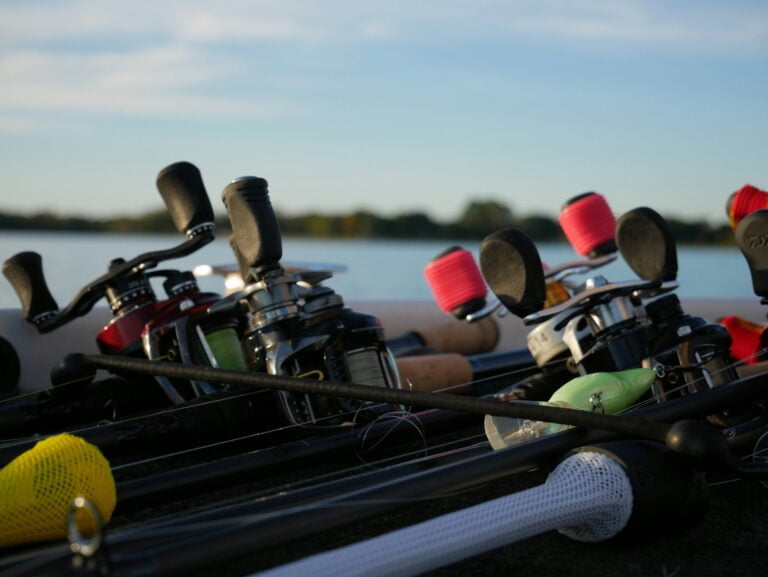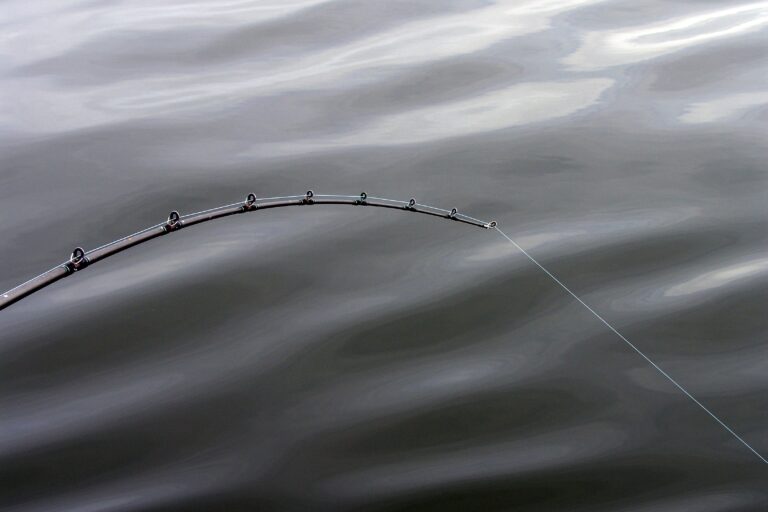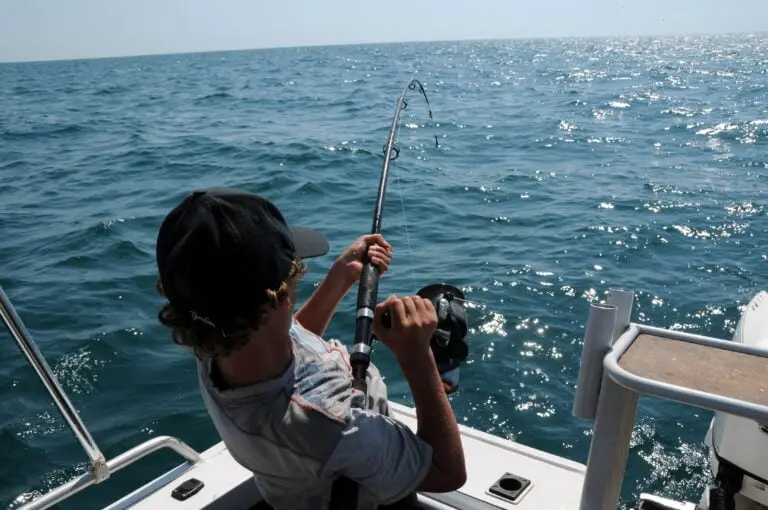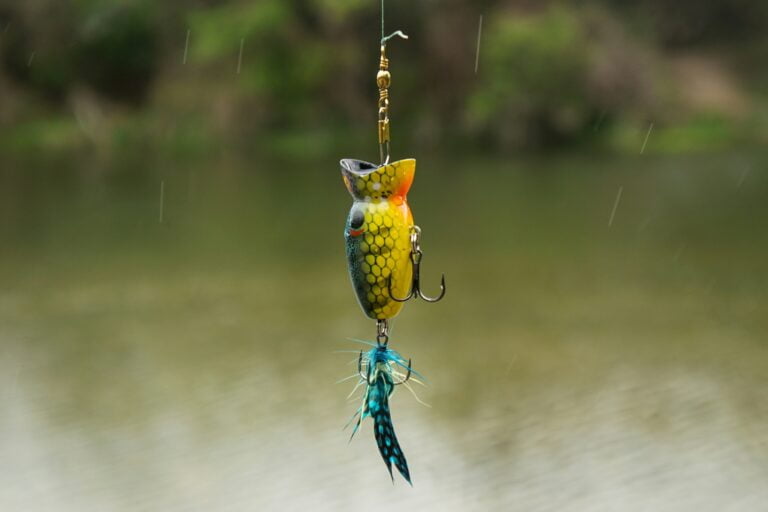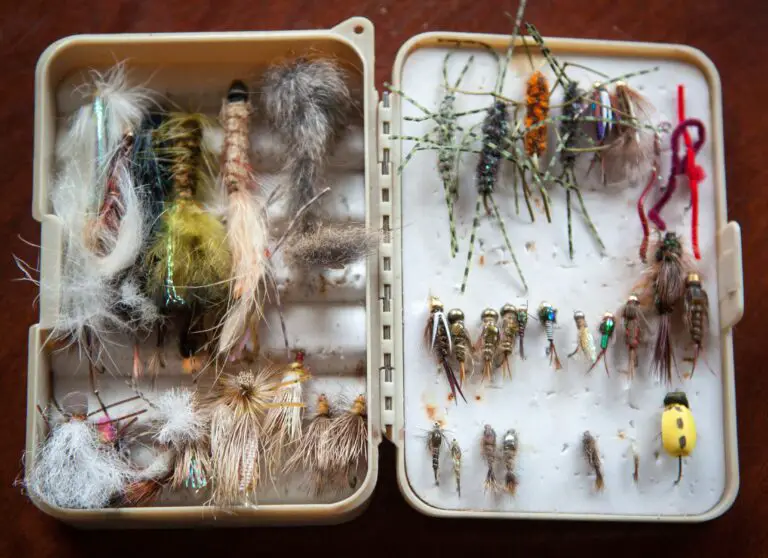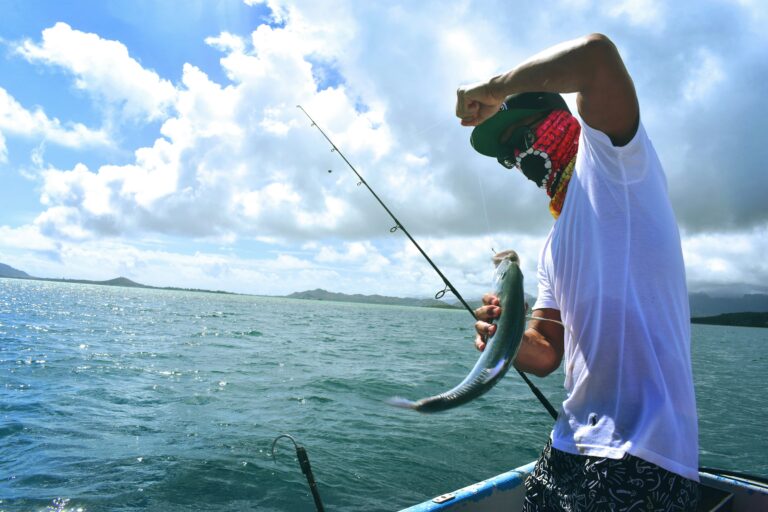How To Properly Set Up A Fishing Pole 2024
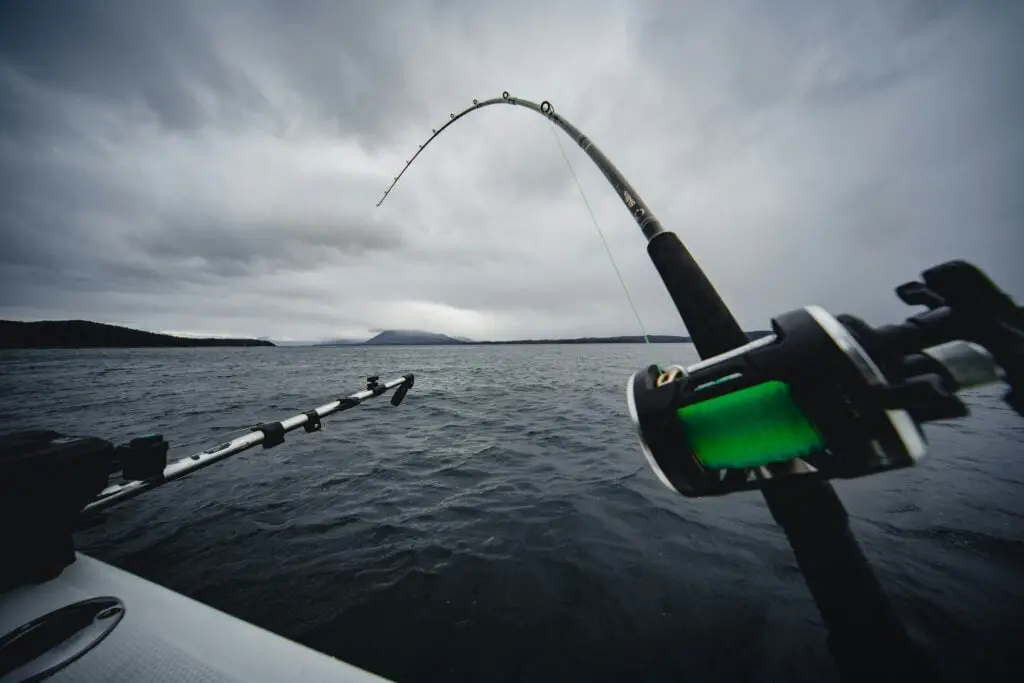
Ah, the serenity of a quiet morning by the lake, the anticipation constructing with every forged of your line. You consider the tug, the fight, and the fun of reeling in a trophy fish. But wait!
Before your dreams of becoming a whopper end, there’s a vital step often disregarded by keen anglers: setting up your fishing pole nicely. Believe it or not, a properly prepared pole can be the difference between an irritating tangle of lines and a picture-perfect seize.
Let’s dive into the essential steps to make sure your fishing journey is as smooth and exciting as the best forged you envision.
How To Properly Set Up A Fishing Pole: A Comprehensive Guide 2024
Assembling the rod and reel
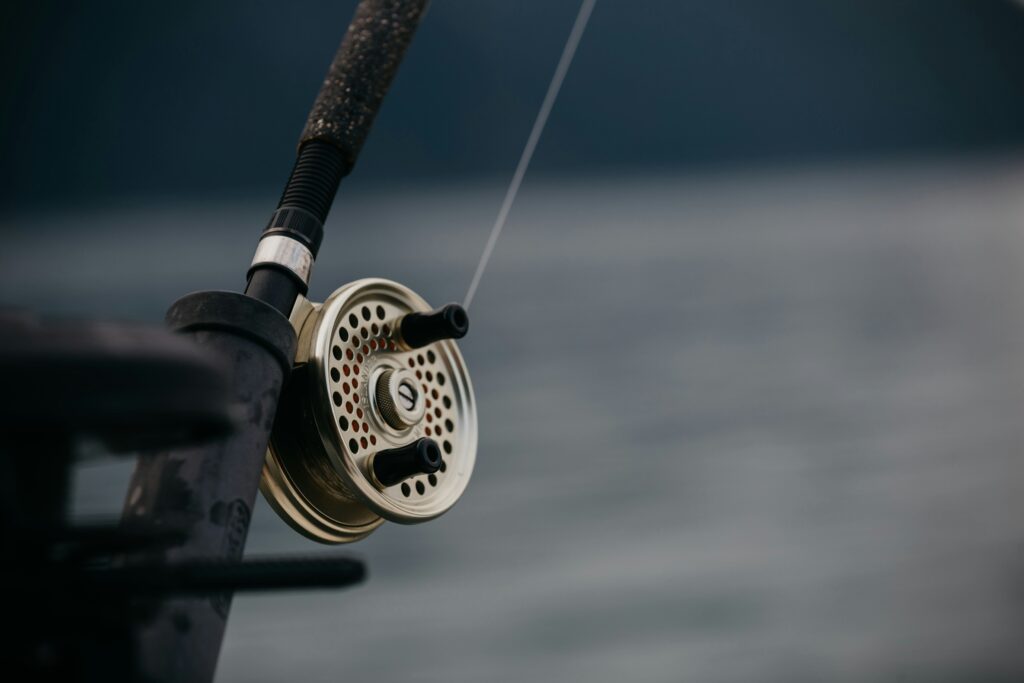
Now that you’re geared up for a wonderful fishing adventure, let’s tackle the primary hurdle: assembling your trusty fishing pole. This may additionally appear truthful, but expertise in the unique additives and ensuring the entirety is properly connected will ensure a clean and frustration-unfastened experience.
Rod Assembly: Your Fishing Partner’s Backbone
Fishing rods are available in three fundamental types, each perfect for specific fishing styles and target species:
Spinning rods: These flexible workhorses are perfect for novices and skilled anglers alike. They function as a spinning reel that sits beneath the rod, making them smooth to cast and control.
Baitcasting rods: Designed for more skilled anglers, baitcasting rods offer extra casting accuracy and strength. However, their reels sit down on the pinnacle of the rod, requiring extra exercise to master casting strategies.
Fly fishing rods: built for finesse and casting light-weight flies, those specialized rods are best for trout and other sensitive fish.
Let’s get to the key parts of your fishing rod, irrespective of the kind
Tip: The sensitive give-up of the rod frequently suggests a small guide for the line.
Guides: those calmly spaced pieces of jewelry alongside the rod that help direct and control your fishing line at some stage in casting and retrieving.
Ferrule: The joint where a multi-piece rod connects is typically secured with a metal sleeve for a seamless connection.
Reel seat: the particular spot at the rod wherein your reel can be securely fastened.
Butt: the bottom segment of the rod, presenting leverage and a snug grip.
Choosing the Right Rod
When choosing your rod, recall the kind of fish you’re targeting and your selected fishing style. Lighter rods are ideal for smaller fish and finesse strategies, while heavier rods provide greater strength for combating large catches.
Assembling Your Multi-Piece Rod
Most modern fishing rods are broken down into more than one section for easier shipping. Here’s how to collect yours
- Line up the sections: Carefully align the sections visually and by experience, making sure proper alignment markers fit up.
2. Insert the ferrule: Gently push the thinner section into the broader one till it reaches a certain stopping factor. You might experience or listen to a slight click.
3. Secure the connection: Tighten the ferrule by rotating any locking earrings or turning a screw mechanism (depending on the rod layout). Avoid over-tightening, which can damage the ferrule. - Reel Attachment: The Engine of Your Cast
The reel plays a crucial function in casting, retrieving your line, and preventing fish. There are two foremost kinds:
Spinning reels: As mentioned earlier, those user-pleasant reels sit below the rod and feature a spinning bail arm that controls line waft.
Baitcasting reels: These extra-complex reels sit down on top of the rod and require unique thumb manipulation for casting and line control.
Choosing Your Reel
Select a reel that complements your preferred rod in terms of weight and strength. For beginners, a spinning reel is generally simpler to research and use.
Attaching the reel
Locate the reel seat for your rod. The reel foot (the part that attaches to the rod) should slide snugly into the reel seat. Tighten the reel seat securely; however, keep away from over-tightening, which could harm the reel or rod.
Now that your rod and reel are united, we’re one step in the direction of casting your line and reeling within the huge one!
Spooling the reel with a fishing line
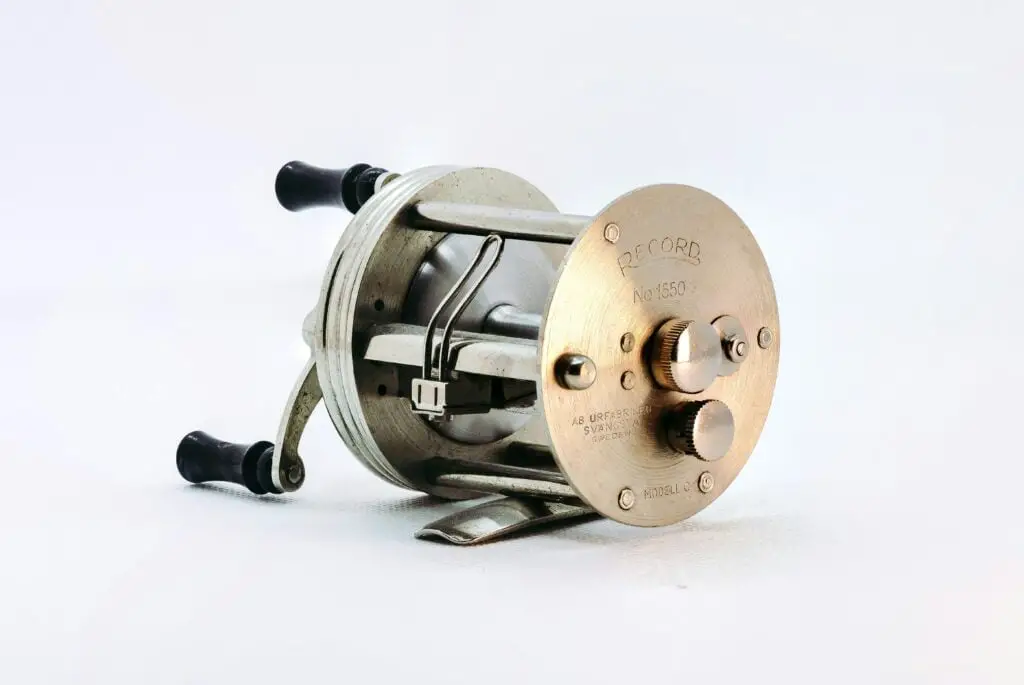
With your trusty rod and reel assembled, it is time to equip your weapon with its most important ammunition: the fishing line! But earlier than you hearth off casts like a pro, deciding on the proper line and spooling it properly are vital steps.
Choosing Your Fishing Line: A Match Made in Casting Heaven
Fishing strains come in three foremost sorts, each with distinct homes that cater to specific fishing eventualities
Monofilament: The conventional desire for many anglers, mono gives accurate all-around performance. It’s low-priced, casts properly, and has some stretch, which may be useful when fighting fish. However, mono is extra visible in water and might become worse through the years.
Fluorocarbon: Nearly invisible underwater, fluorocarbon is ideal for shy fish or clean water situations. It’s also pretty robust and has minimum stretch, bearing in mind better chew detection. However, fluorocarbon may be more expensive and may be trickier to knot.
Braided Line: The super-strong and genuinely no-stretch braided line gives advanced sense and control. It cuts through weeds and currents quite simply, making it ideal for precise strategies. However, braid is particularly visible and can be noisy when casting.
Line weight matters
The thickness, or “weight,” of your line should be chosen based on the size of the fish you’re concentrating on. Lighter traces are higher for smaller fish and finesse shows, while heavier traces are needed for struggling with bruisers. Generally, your rod may have an advocated line weight range printed on the blank.
Spooling Up for Success: Mastering the Art of Line Management
Now that you’ve chosen your line warrior, let’s conquer the spool! Here’s how to properly spool your fishing reel:
- Open for business: Locate the bail arm on a spinning reel (the cord arm that controls line drift) or the spool release on a baitcasting reel. Flip the bail arm or press the release to allow the line to waft freely.
2. Securing the Line: Take your selected line and make a few loops around the spool to keep it from slipping. Tie a steady knot (like an Arbor Knot) using the tag of the road to fasten it onto the spool.
3. “Spooling with Precision” Hold the line spool at an angle, with the road feeding off the pinnacle of the spool. Begin turning the reel along with your other hand, retaining regular tension on the road because it winds onto the spool. This angled method facilitates the line lying flat and decreases twists.
4. Don’t overfill: Keep an eye on the spool as you wind. Ideally, leave a small gap (about 1/8 inch) between the pinnacle of the road and the spool’s rim. Overfilling can cause line twists and casting troubles.
5. “Snip and Conquer” Once spooled, close the bail arm or disengage the spool release. Use sharp clippers to trim the extra-line tag.
Congratulations! You’ve effectively spooled your reel and are one step closer to casting your line and experiencing the fun of the capture.
Attaching the fishing line and leader (optional)
We’re almost ready to solidify our lines and tempt those trophy fish! This step makes a specialty of connecting your fishing line to the business stop of your setup: the lure or hook. There’s an optionally available step you might bear in mind, referred to as a leader.
The Power of Invisibility: Leader Lines
A chief is a quick section of line, generally made from fluorocarbon, tied between your primary fishing line and your lure or hook. It offers several advantages:
Increased Strength: Leader cloth is frequently stronger than your major line, supplying greater safety in opposition to abrasion from rocks, teeth, or sharp structures.
Invisibility: Fluorocarbon leaders are almost invisible in water, making them much less likely to spook cautious fish.
Tying the Line to the Leader: A Knot You Can Trust
If you pick out to use a leader, you will need to securely connect it to your predominant fishing line. Here’s how:
- Choose your weapon. Select a sturdy and dependable knot, just like the Palomar knot, recognized for its simplicity and effectiveness. There are many assets online that visually demonstrate a way to tie the Palomar knot.
2. Tie and Secure: Thread the stop of your major fishing line through the leader loop, then go in reverse via the main line itself, forming a primary overhand knot.While holding the overhand knot, skip the loop of your main line over the hook (or wherein the chief will hook up with your trap) and slide it down toward the lowest of the chief.Wet the knot slightly to reduce friction, after which cautiously pull both the tag line of the road and the principle line to tighten the knot firmly. Clip the extra tag end with sharp clippers.
Connecting Directly to Lure or Hook (No Leader)
If you no longer want to apply a frontrunner, you may simply tie your fishing line directly to your lure or hook using a sturdy knot like the Palomar knot or the stepped forward clinch knot. The technique is similar to tying the road to a leader, simply without the extra step of connecting the leader itself.
Remember: No matter which technique you pick, ensure your knot is secure and well tightened to keep away from dropping your entice or catch at some stage in the warfare.
Adding a Lure or Hook and Bait: Equipping Your Fishing Arsenal
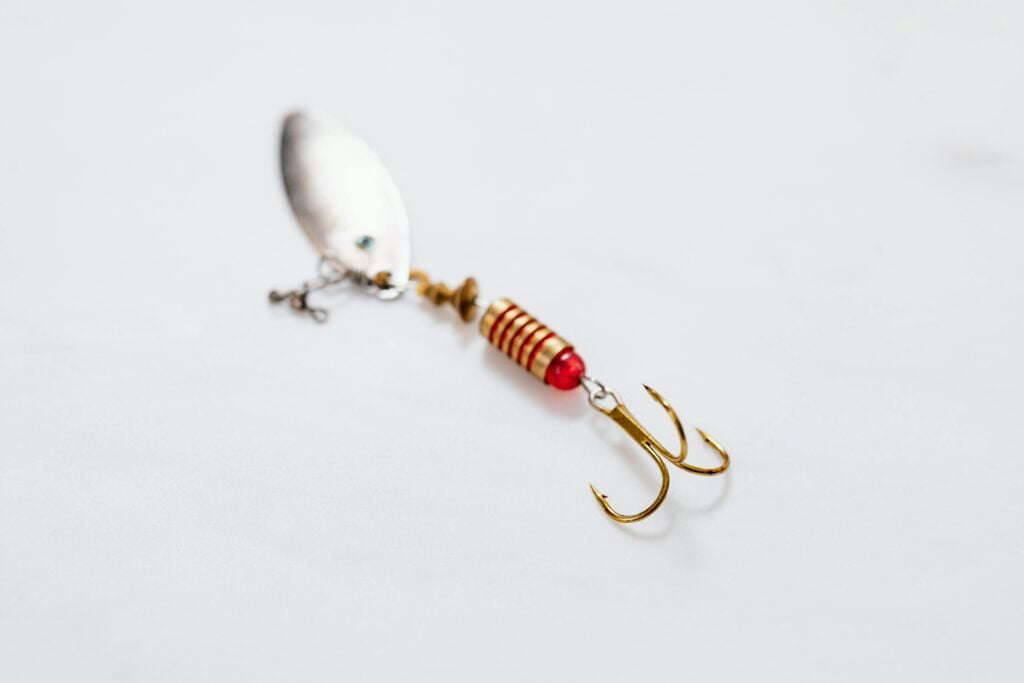
Now that your line is prepped and linked, it’s time to equip your setup with the remaining fish magnets: the trap, hook, and bait! Choosing the right alternative depends on the sort of fish you are after and the strategies you’ll employ.
Lures & Hooks: A Diverse Buffet for Finicky Fish
The international market for fishing lures and hooks is sizable and exciting. Here’s a glimpse into some famous choices
Lures: These mimic baitfish, insects, or other prey, enticing fish to strike. Common lures consist of:
Artificial baits include crankbaits, jigs, spinners, spoons, and topwater lures, each designed to imitate precise movements and appearances.
Fly-fishing flies are delicate and colorful creations that resemble bugs or baitfish, best for trout and panfish.
Hooks: These are available in various sizes and styles and are designed to snag and hold onto fish. Popular options consist of:
Treble hooks: Featuring three factors, those are ideal for lures and regularly used for bass and other aggressive fish.
Circle hooks: With a curved point, those promote higher hooksets and can help reduce accidents for fish if capture-and-release is practiced.
Jig hooks: Often paired with tender plastic baits, these function as a weighted head for casting and a hook factor for catching fish.
Matching the Right Lure or Hook to Your Target
Researching the fish species you’re focused on is prime. Consider their feeding habits and desired prey. Here are some well-known recommendations.
For backside feeders, choose weighted lures or bait fished near the bottom, like worms or jigs.
For sight feeders, opt for topwater lures or brightly colored lures that mimic baitfish.
For finesse feeders: Use small flies or lures with soft plastics for trout or panfish.
Attaching Your Lure
The approach to attaching your trap depends on its kind. Here are a couple of common scenarios:
Snap and Go: Many lures have an integrated loop or eyelet that allows you to truly snap them onto a snap swivel related to your line.
Tying for Action: Some lures, like crankbaits, require tying a knot directly to an eyelet. The loop knot is a popular choice for this utility. There are many online tutorials demonstrating how to tie the loop knot efficiently.
Baiting Up for Success
If you’re using stay bait or smooth plastics, here’s a brief rundown on baiting techniques:
Live Bait: The approach varies depending on the bait (minnows, worms, etc.). Generally, you need to hook the bait in a way that keeps it lively but avoids injuring it too much.
Soft Plastics: These come pre-formed and require inserting the hook factor into specified slots or hooking them weedless via strategically located sections.
Remember, practice makes perfect! Experiment with one-of-a-kind lures and baiting strategies to find what works well for you and the fish you’re concentrating on. In the following segment, we’ll cover a few final steps to ensure your setup is prepared to reel in the large one!
Testing the Setup: Ensuring a Smooth Performance
Before you forged your line and set your attractions on a trophy catch, there are two essential steps to make certain an easy and successful fishing experience: testing the drag and practicing your casting method.
The Art of the Drag: A Delicate Balance
The drag in your reel acts as a protection internet for the duration of the combat with a fish. It permits lines to be released under stress, preventing your line from snapping or your rod from breaking if a feisty fish puts up a strong fight. Here’s why testing the drag is critical:
Too Loose: A free drag will permit too much line to be released in the course of a fight, making it hard to govern the fish and probably leading to misplaced catches.
Too Tight: An overly tight drag risks snapping your line or pulling the hook free from the fish’s mouth.
Setting the Drag for Success
- Consult your reel’s manual for specific instructions on adjusting the drag.
2. With the bail arm open (spinning reel) or spool launch disengaged (baitcasting reel), hold the line with one hand and slowly tighten the drag knob with the other.
Three. The line ought to start to tug out progressively as you boom the drag stress. Aim for a setting wherein the road releases with a mild but firm pull, much like the pressure you would possibly feel when setting the hook.
Practice Makes Perfect: Mastering the Cast
Once your drag is ready, it’s time to practice your casting technique! Here’s a fundamental evaluation:
Open Sesame: Open the bail arm on a spinning reel or disengage the spool release on a baitcasting reel to permit the line to waft freely.
Grip and Rip (sort of): Hold the rod simply together with your dominant hand and grip the road behind the reel seat together with your other hand.
The Pendulum Swing: With your arm extended, make a clean backward forged with the rod, letting the burden of the trap or sinker pull the road off the reel.
Reel It In: As the forged reaches its peak, flick your wrist to close the bail arm (spinning reel) or interact with the spool release (baitcasting reel) to forestall the road from feeding out. Then, start reeling the line again in with a constant retrieve.
Practice in a safe area
Before heading to your favorite fishing spot, find an open vicinity freed from obstacles to practice your forged. This will help you refine your approach, gain experience with your reel’s overall performance, and make sure your setup is functioning flawlessly.
Conclusion: Casting Your Line Towards Success
There you have it, anglers! We’ve explored the vital steps to putting your fishing pole in place. From assembling your rod and reel to attaching the precise trap and checking out your drag, each step plays an important role in maximizing your fishing enjoyment.
Remember, a properly organized setup can suggest the distinction between frustration and an interesting seizure. By taking the time to make sure the entirety is hooked up securely, your line is spooled successfully, and your drag is about appropriately,
You’ll be ready to solidify with self-belief and cognizance the true pleasure of fishing: the anticipation of the strike, the fight of the fish, and the pride of a successful capture (or the splendor of a peaceful day by way of the water, even supposing the fish aren’t cooperating!).
So, grasp your rod, address the field, and feel the adventure. Head out for your preferred fishing spot, put your newly acquired setup to the test, and revel in the magic of this undying pastime. Tight traces and glad fishing!
Call to Action: Let Your Inner Angler Free and Share Your Fishing Stories!
It’s time to make some truly memorable fishing memories now that you have the knowledge to insert your fishing rod like a pro!
We’d love to hear about your fishing adventures! Share your tales, brag about your largest catches (or funniest fails!), and ask any lingering questions within the remarks phase below. The fishing network thrives on sharing reports and understanding.
For those seeking to raise their fishing confidence, check out our internet site for a curated choice of pinnacle-rated fishing rods, reels, lures, and other important gear [insert link to your website or relevant fishing gear store, if applicable].
FAQs
What is the proper way to put line on a fishing pole?
The proper technique for attaching a line to a fishing pole is to start on the manual closest to the line, threading the road through each subsequent guide until you reach the very last one at the tip of the rod. Ensure there’s around three to four feet of line extending from the give-up.
Which line is best for fishing?
The first-rate line for fishing varies depending on the method and conditions. Fluorocarbon line stands proud as a splendid desire for its sinking capability, best for lures that need to attain deeper waters. Its close-to-invisibility underwater additionally makes it best for finesse strategies focused on careful fish.
Can fish see line in water?
Yes, fish can see fishing strains in the water. The reflective properties of nylon strains make them visible to fish, in particular when viewed from under, in comparison with the surrounding water.
How long is fishing line good for?
The lifespan of fishing line varies depending on usage. Monofilament strains should ideally be replaced annually; however, heavy customers can also want to alternate them three to four times a year, even as mild users can generally escape by changing them two to three times a year.

